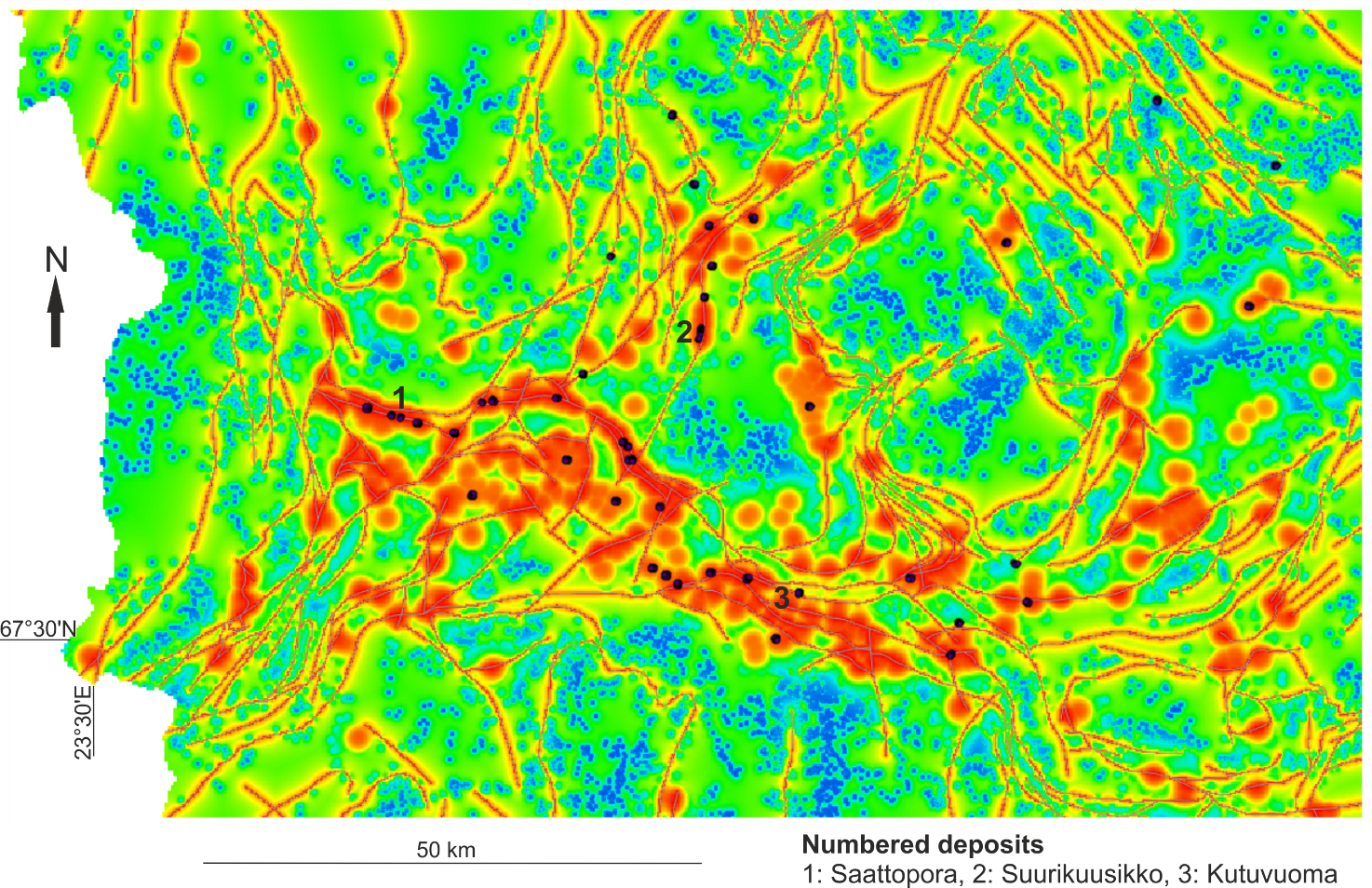Orogenic gold occurrences with anomalous metal association in Finland are characterised by the following features:
- Pre-mineralisation, intense albitisation ± carbonatisation of a variable degree. These are only detected with certainty in the Palaeoproterozoic Karelian belts: Central Lapland greenstone belt, Kuusamo and Peräpohja.
- Ground preparation by premineralisation alteration in Central Lapland and Kuusamo is common. Intensely albitised and carbonatised volcaniclastic sedimentary and mafic to ultramafic volcanic units commonly host the ore. Pre-gold albitisation at gold occurrences are shown for the Palaeoproterozoic Central Lapland greenstone belt and Kuusamo schist belt
- Syn-mineralisation proximal assemblage of biotite and/or muscovite–ferrous dolomite (or ankerite)–albite–rutile–pyrite + at least two of the following: arsenopyrite, gersdorffite, cobaltite, chalcopyrite, cobaltian pentlandite
- In ultramafic rocks, fuchsite or phlogopite instead of muscovite or biotite, respectively
- Deposits and their immediate wall rocks are enriched in Ag, As, Bi, Co, Cu, CO2, K, Na, Rb, Se, Te ± Ba, HREE, LREE, Mo, Ni, Sb, U, Th, W
- Download Excel tables: Enriched by belt; Oreminerals alteration by belt; Orogenic alteration sequences
- A set of deposits in Southern Ostrobothnia are otherwise similar to gold-only deposits in amphibolite facies, except having antimony as a potential commodity and abundant native antimony and stibnite in the ore mineral assemblage. Download Excel table: Au Sb.
- Scattered occurrences enriched in Cu occur in the Raahe-Haapajärvi camp. None of these have been investigated in enough detail that one could say whether these are low-grade syngenetic deposits overprinted by orogenic gold or real cases of orogenic gold with anomalous metal association. There are several features which make these different to the polymentallic gold deposits of the Karelian domain:
- There is no indication of albitisation at any degree
- No saline fluids detected in the system (fluid inclusion investigations not done)
- Tectonic setting is accretionary to collisional only, without any indication of pre-orogenic rift environment.
Features, additional to those above, that characterise some gold-only and anomalous metal association deposits, but clearly not the majority, include:
- Enrichment in B and weak tourmalinisation
- Localised enrichment of Ag, Pb and Zn in the mineralising system: typically just one occurrence within a belt; this base metal enrichment only covers a part of the potential gold ore
- Depletion of Li, Na, and Sr (uncertain how common this is as robust mass balance calculations are not done except in a very few cases); Also, syn-gold Na and Sr depletion can be difficult to prove if there is pre-gold albitisation.
- Minerals present in the proximal alteration assemblage: tourmaline, graphite, and magnetite (amphibolite facies only)

Central Lapland greenstone belt. Albitisation, structures and known gold depostis and occurrences. Black dots are gold occurrences; Red domains indicate albitised rocks; Thin red lines are faults and shear zones; No albite indicated by blue dots except where crossed by a structure (thin red line). Yellow shades turn to green when getting further away from the faults, shear zones and albites, and are restricted by the presence of non-albitised rocks. Albitisation information shown is based on drill core and outcrop. Note the positive correlation between gold and albitisation. Exceptions to that correlation include mainly occurrences which probably are not orogenic gold but of some other genetic class of mineralisation. Image by Johanna Torppa, GTK.
(Last update: 20.05.2020)